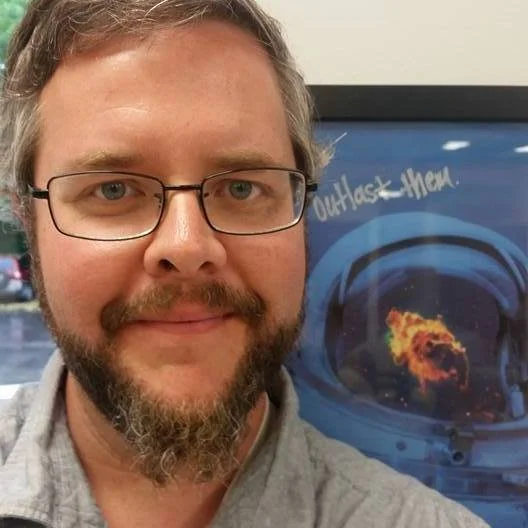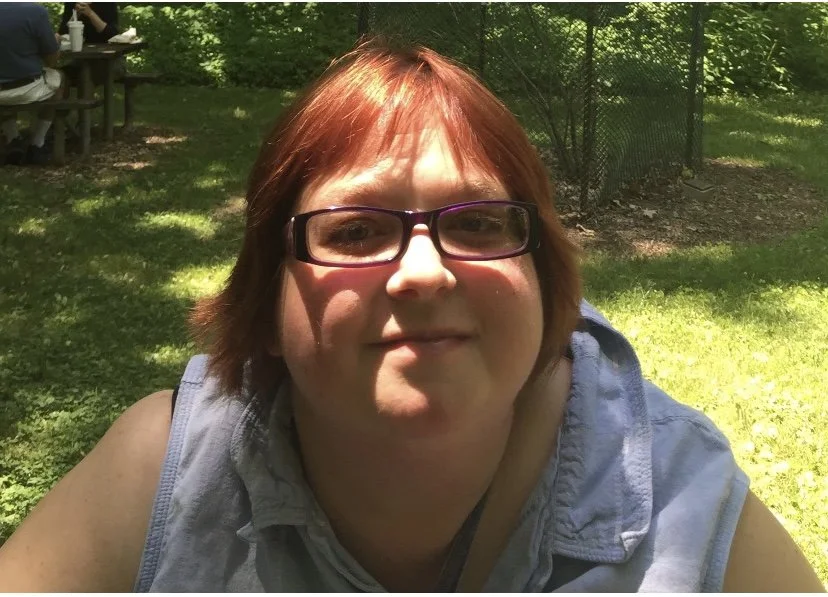TRANSCRIPT:
Ashley: My name is Ashley Hart and our family did the growing Christmas tree in Goshen project.
Katie: Alright so you worked on getting to know your neighbors last year through this project? And talk me through that year, what did it look like, what did it take for you guys to put all that together?
Ashley: Well it started off with me getting really excited about creating something new. So I came up with a list to my mentor of all the fun ideas I had. Then evaluating how those ideas matched with the community that we lived in and what would be a gift to them and something that we could make memories together with them. So we kind of spent time connecting with neighbors in a different way than we had before. So we might go on a walk and stop over and say good evening to our neighbor or call them over and invite them over for dessert or whatever. And that kind of got the relationship frequency enough that we were able to have more conversations.
Katie: Yeah, and were you bringing the idea of this Christmas tree project to them right away or how did you start on that path to get to that project idea?
Ashley: So I think one of the things that I realized for myself and took that to the way I was connecting with our neighbors was that I in my own life wasn’t prepared for a big ask and so I didn’t want to throw a big ask at someone else. Really I was still putting feelers out to see if the idea that we had could even happen. So our neighbor happened to be a landscaper, so I didn’t even know if he would plant Christmas trees in December or not, or if that was like not going to work. If the trees were going to die or the ground would be too frozen or whatever.
Katie: Because you guys did not have Christmas trees on your property when you started this?
Ashley: Correct.
Katie: But you had how many acres?
Ashley: Eleven acres.
Katie: Eleven acres and what are you going to do with it, how are you going to make that an asset to the community?
Ashley: Right, and we had always kind of had a vision even on our wedding day we invited people to our property and invited people to spend time there. We wanted it to be a hospitable place but I don’t think we had the tools and the permission that we were given to make it kind of an official thing to start inviting people and doing something unique for the community.
Katie: So it took some permission seeking?
Ashley: I think so, which is weird, but yeah. I think someone saying here’s some support and here’s some encouragement and start dreaming. And I was desperate for the idea to be dreaming about something other than being concerned about what’s going on in our day to day experience.
Katie: Right what was your main concern at that point, what were you worrying about?
Ashley: I think I was really focused on ensuring that our daughter would be prepared to engage in her community and the way that I thought I was going about that was through therapy and appointments and things like that because that required so much energy I just didn’t think I had anymore energy to start something new.
Katie: So you were trying to pave the way for your daughter to be part of the community some day, but you weren’t really sure about how to go about it. And meanwhile you had other day to day appointments and things that you had to be doing that were taking up time, energy and effort and that that permission that you go to do something off the scope of the therapy list.
Ashley: Oh yeah it was like it was such a gift. Yeah it was just you know you get stuck in the grind of doing what’s best and the idea to imagine creating something that intrinsically you already know what is good for you, and what is good for your family and what is good for the community. And just someone saying ‘Go for it’ it’s really.. I’ve talked about that you’re getting to lift your eyes off a problem or what is perceived as a problem and getting to lift your eyes to bringing beauty into your world and your community.
Katie: Yes, so before you started this, was it a year long project, about?
Ashley: Yeah.
Katie: Ten months, year long project, before you started the year long project to plant Christmas trees in your yard and invite your neighbors to, can you explain actually a little bit more about what that Christmas tree project was in the end?
Ashley: Yeah, so the goal was, we started the project in July, and because of the event, our event was in December. So we had to kind of move quickly once we decided what we were doing but the idea was to invite families in the community, so because it’s a rural community that’s a wide area, but invite community members to come and to plant a CHristmas tree on our land. And we wanted it to be a healing experience to everyone who came so we talked through what’s healing for community and individuals. So we brought the five senses into the experience. So we had art, lighting, lumineers, paths through the fields and Christmas music anda baker came and baked Christmas cookies that’s from Goshen and hot cocoa and a bonfire. So we tried to make it as memory making as we could by sealing in those five senses and then families are invited to come back each year and they can either take their Christmas tree if it’s tall enough for them or they can just check on it and take a picture with their family. So that’s been really fun to see families bewildered in the generosity. Families would call us and say, “ok so what are the rules around this?” or like ‘well how do we sign, and ensure that this is ours.” And so they’ve just been really surprised by the generosity.
Katie: They also are seeking permission.
Ashley: Yeah.
Katie: To just show up and have a Christmas tree party?
Ashley: Right. Right.
Katie: Yeah it kind of shows that we’ve lost a little bit of our muscle for community building. We don’t really know what to do in the face of something as ordinary and simply beautiful as this, it’s kind of like there’s a catch. Where’s the marketing here?
Ashley: Right, exactly and we have a friend here at Starfire mention that really we’re just returning to our roots as rural people. Who used to sit on one another’s porches and play music and eat together, so we talked about that that evening that we want more of that. And we really got a sense from our neighbors that they did too. So people would come by and talk to me about it like, “Oh I have this idea or I have that idea.” So we’re hoping that fosters more and more of that.
Katie: Did many people know your family who came to the event? How did you make connections and make that neighborliness happen?
Ashley: So it was funny because several days before the event we had no one signed up for the event.
Katie: Seven days before?
Ashley: Several, several so like three or four days before. We had like signs up, we had advertised.
Katie: So really quickly describe your neighborhood real quick because when you say you have signs and things up it’s at like the one library and maybe like…
Ashley: One coffee shop.
Katie: Yeah.
Ashley: There’s one coffee shop, there’s like two fast food restaurants or three and two gas stations and a library. Otherwise it’s a very rural community. So we had posted things on Facebook, on the Goshen Facebook community page but then we had also put it in a coffee shop. So we really had no idea how many trees we needed so we picked thirty, I’m not sure why but it was crazy because somebody called like three or four days before and was like I know it’s really late but is there anyway our family could sign up? And I was like yeah we’ve got some room.
Katie: You hang up and were like woo-hoo!
Ashley: Yes totally, like we got one and her friend wanted to sign up too so that made two families and what we didn’t know which I think is really important is having people invested in the process, so our neighbor Dan brough him and everyone he knew to that event. He was excited about it because he had done so much in giving advice and shopping around for trees and going to get thte trees, that he was invested enough to want it to be a good event and want his people to come and experience it.
Katie: And is this the landscaper you had mentioned? So you had a neighbor, I mean you have eleven acres how many acres are around you?
Ashley: We have one to our right and one to our left then we have one across the street, so yeah. Not a lot.
Katie: So you have three neighbors in the vicinity of you and neighbor Dan was one of them. What a gem.
Ashley: I know he is a gem.
Katie: How did you meet him? Did you already know him?
Ashley: Yeah, he has been friends with my husband’s parents who live right next door also. So he’s been a friend of their families for a while and you know in rural communities if there’s something wrong everyone shows up. But otherwise you kind of naturally keep to yourself and sometimes you might stop over and say hi but this just was really nice because we got to spend more time together and got to use one another’s gifts in a way that brought people together so that was great.
Katie: Yeah. So this was not the first time that you’ve been part of a community in an intentional way. This experience that you had in your neighborhood with your family was sort of precluded by your own youth living in intentional community being part of living with a family, so you’ve tried community in various forms?
Ashley: Yeah it’s always been important to me.
Katie: Can you talk more about that?
Ashley: I think I’ve always experienced more joy when I’m doing life with other people and yet when you’re doing life with more people it can be complicated too. So that’s just being with other people.
Katie: That’s a good thing to know going into it.
Ashley: Yeah I think so.
Katie: You had seen some of the pitfalls of it but you had also lived some of the joys of it and knew I want this for my family now too?
Ashley: Right and you know even having your own family that’s having a small community. So yeah I’ve experienced it in multiple different settings and really just treasured the gift of letting people be beyond the veils of their front doors and back doors and getting to spend real life with one another.
Katie: Yeah so you’ve sought it out in that way. You’ve been seeking it. How were those experiences that you’ve had in the past in the intentional community that you have been different from the one that you experienced when you reached out to your neighbors and kind of had this project type experience where you’re connecting over a shared idea, a creation versus like all living together in the same house?
Ashley: Yeah, well it’s nice because you have a goal and it’s accomplishable and you’re kind of bringing everyone in so that’s different I would say. Then just all doing life together. You have an event and then it’s done.
Katie: Yeah, you’ve all achieved something together and like you said earlier and it’s a way for everyone to use their specific gifts like you had the baker that came, neighbor Dan brought the trees, there were other people who probably set up the decorates and had ideas around where to plant the trees. Even the people who showed up that day, their gifts were their presence and getting enthusiastic about what’s going on. And everybody can kind of have a role there and doing something that’s kind of out of the ordinary.
Ashley: Very out of the ordinary for Goshen. Yeah we had one experience where it was like an art installation where we zig-zagged rope through the trees and everyone brought a little lantern out, different sizes of light lite lanterns so by the end they had created this beautiful art piece and we talked about you’ve all brought your gifts here tonight, just being together and this is just a display of what could be as we spend time together and do life together.
Katie: Yeah I love that imagery. So we’re going to segue. To the time you decided to move away from this place. The moment you made the decision after all of this goodness had been created to say you know what we’re going to try a new neighborhood. Take me to some of the decision making and what was that like? Was it difficult? Where you anxious about leaving? Did you feel like what if we regret this because we’ve made all these connections. What was your motive there?
Ashley: Sure, yeah well I think one important thing to talk about as far as the project goes is we were in the midst of deciding while we were doing the project. So I asked my mentor should we do it in Goshen? Should we do it where we think we’re going to go? And we kind of ended up deciding to do it now and do it where you are and I think there’s a lot of lessons in that.
We don’t have to wait until we think everything is right to start building community and to start creating spaces of belonging for our neighbors and memory making moments for each other those are always good and always can be healing, so I’m glad we didn’t wait.
Katie: And you also have a two year old, three year old?
Ashley: Three year old now.
Katie: A three year old. So as parents too it’s like well I’m going to wait until my kid gets older, things are less hectic. So doing it in the midst of all of it and what’s the value in that that you found at the end even when you guys were packing up your bags and deciding to leave?
Ashley: Well I think the biggest take away for us was that we built the muscle to like we now have the muscle to build community. And I”m just naturally looking for it all the time going like ‘oh what could we do here?’ So we’ve done a couple of things in our new neighborhood not for any project per say but because we now have the muscle and we want community where we are.
Katie: Yeah tell me what were some of the first few things that you did when you moved to the new neighborhood that maybe you didn’t do when you moved to your Goshen neighborhood?
Ashley: Yeah, so our new neighborhood before we had actually bought the house but we were pretty sure that was where we were headed it was trick-or-treat so we were like ok how often are you invited to every single person’s house at the same time. Like this, we can’t miss this.
Katie: Yeah that’s a good point.
Ashley: Yeah like never.
Katie: Yes please come knock on our door and we’ll give you things.
Ashley: So we went to that neighborhood that night, just to introduce ourselves and said we are probably going to be living right there and we’re eager to connect with you guys.
Katie: Wow so even before you put money down on the house, even before you closed on the house?
Ashley: Yes, yes.
Katie: Wow, ok.
Ashley: Yeah, so we were excited about building community there and we really wanted to take what we were learning and not just leave it in Goshen, but bring it along with us for all of us. So that’s one thing that we did, that was in late October and then in February we made jars of hot cocoa and put our picture on them and our address and we said we’re your new neighbors and our daughter was in a little red wagon and just saying hello and that inspired lots of conversations and people coming to our house and bringing us stuff. So that kind of got the wheels spinning in the neighborhood I think.
Katie: Were you writing down names after each one?
Ashley: Yes, my husband actually was really intent too which was a fun dynamic to see him to start getting invested in the idea of community building because he didn’t grow up building community like I did as much.
Katie: And he was the note taker he was the one, yeah?
Ashley: Yeah, wanting to know his neighbors.
Katie: So I think what you just touched on which is really important is we think sometimes we need to be the ones welcomed in and instead you guys were the welcomers to your new neighborhood to your new neighbors to say hey we’re here and we want to know you. So taking the first step doesn’t always have to come from the other person.
Ashley: Right, and I think that’s kind of fun for the neighbors to be like ‘wait she flipped the switch, like what just happened there?’ Yeah, and it was totally fun for us so we said we would do it again in a heartbeat because we got to go in people’s houses and visit and people came in our house, it was nice.
Katie: Yeah when you left your neighborhood behind did you have any lessons that you were taken from what you learned over that year with the Christmas tree project that you were like we’re going to do it differently this time. We tried it that way and now let’s try it this way. Was there anything that stood out where you’re like…
Ashley: Lessons learned?
Katie: Yeah.
Ashley: Yeah, I think the big lesson, my big takeaway from growing Christmas trees in Goshen was with a new event, a new project no one knows what to expect so it’s really hard to get people invested unless they’re a part of the creation of the idea, and so we only had a couple people that were involved with the creation of the idea. And so that ends up meaning that you’re doing a lot of the creation and administration of the event, so my take away in the future is that I want our neighbors there with us like what should we do with our community what would be something that our community needs or wants that would be fun for everybody. So bringing everyone into the decision making piece..
Katie: From the beginning?
Ashley: From the beginning. Now we’re trying to back track and go like maybe we do a Christmas planning in July so we get everybody to come together to start working towards the goal for the event.
Katie: Yeah and it’s what you said before neighbor Dan was invested from the beginning and he was somebody who brought a lot of people with him, so the people who come it’s hard to sometimes invite the whole neighborhood if it’s just your family. But the more people who come, the more networks they have and everybody's networks kind of show up too. But also you’re saying just the excitement piece and getting it all together, it’s not all on you as a family to plan it all and dream it all up and there’s more shared ownership.
Ashley: Right which means there’s more presence at the event too. There’s ten families that are excited about it and they’re bringing all their gifts and networks there. So that’s a big help, so I think that that would be if I was doing that again when we tried to do that but I think we’re all just learning as we go and I think we did it by inviting a group of people, we weren't good at explaining this is what we’re thinking about we just said come plan with us we’re going to do an event and they were like i have other things going on so..
Katie: Yeah, sounds like work.
Ashley: Yeah, exactly, so eventually they came to the event and they’re definitely a part of our community but not bringing people in early to help ideate and create it.
Katie: What about just in terms of knowing neighbors and interacting with them differently are their things that you do as part of your lifestyle now that maybe you didn’t do you know in your former neighborhood that know you can kind of.. I guess I’m asking that because you can reinvent yourself when you move somewhere, you can be a new person in a way. So there’s a benefit in showing up as this new neighbor and being like ok this is the type of neighbor I want to be now, I might not have been that in my neighborhood prior but now I can show up and nobody knows me and I can start new right?
Ashley: Yeah I think the big thing that we’ve done differently is just at the outset let people know that we’re interested in being together. So a lot of people I’ve learned that in suburban neighborhoods like to play and do outdoor life in their backyard with their privacy fence and so we’ve spent a lot of time in our driveway and in the front yard and going for walks and interacting with people that way so some of it is just relearning how to be in a new environment too.
Katie: Yeah I love that so you’re spending time in the front yard so that when people get home from work and they pull in their driveway you can be like ‘hey’!
Ashley: Right.
Katie: Privacy, there’s a value of privacy that we have as Americans.
Ashley: For sure.
Katie: But we aren’t necessarily happy in our private lives we’d rather spend it with other people we just don’t know what that looks like any more. So do you think that you have a different mindset than you started this with and in what way?
Ashley: I definitely, I have a huge different mindset yeah. In so many different ways I mean it’s like so many different layers, my mindset during community building I’m still super excited about community building in our new neighborhood and I’m also so grateful that i now see people who are neighbors with their gifts. Like that I think is different than before which is surprising to me because I thought that I saw people that way always but I think you know as we were getting to know people in our new neighborhood we were like ‘oh my gosh this is amazing we have this person across the street that does this or that’s interested in that’ and before I think we were just trying to do our own thing and then relating to people asit happened where as now we’re much more intentional about making it happen that we connect with those people and creating spaces where we can do that together.
Katie: So seeing those gifts as an avenue for ‘this is how we can connect with them, wow’ let’s learn from that person or is that the difference?
Ashley: Yeah and I think even outside of our neighborhood I’m just learning how other people we’re connected with have their gifts and who they are, connect with us and vice versa.
Katie: Like the common?
Ashley: Commonality, yeah the things we share and care about. For example, my uncle is a musician and piano tuner and everytime he and my daughter get together they just love doing music together. And so I asked can we do this quarterly even though you live two hours away, can we like break bread together and do music together and so we’ve been doing that for two and a half years since we started getting involved here. So I think just being more intentional and making it happen putting it on the calendar and dreaming in a different way.
Katie: Yeah and you brought up your daughter and I think I want to bring it back to this idea that in the beginning you were like I need to prepare her to be part of the community. In what ways do you see her now as a part of the community and was there preparation in that or did it sort of did she, did she just get immersed in this way through gifts?
Ashley: Yeah I think I’ve been really intentional about not putting her up on a stage to be engaged with but instead just being a part of our family and people engaging with us and with her. If that makes sense.
Katie: Was that a shift for you to think of it that way?
Ashley: I think possibly yeah I think I had an intrinsic sense of her belonging and her belonging in her community but I think I had to learn what things I want to bring our family around and to fuel and what things I want to invest in with our family, if that makes sense.
Katie: Time-wise even?
Ashley: Yeah.
Katie: Where you’re spending your time?
Ashley: Yeah, we did study with our congregation with families and the number one asset the number one deficit that they had was time. That’s your number one thing, right, you have to spend it where it counts and so for us we really decided that we look like being together as a family and being with our extended family and being with our neighbors.
Katie: Yeah. I guess that part of it in the beginning you were looking at therapy and things to get her ready for people and now you’re just like you’re doing those things still.
Ashley: Yeah, and I guess my answer is I always had a sense intrinsically that she belonged no matter what and I think that having conversations with my mentor affirmed my intrinsic sense of her belonging, does that make sense?
Katie: Yes, do you think that hearing that from somebody who is in the disability field to say something as ordinary as like go get to know your neighbors, was that.. Because it’s playing into your instincts as a parent that you already know and it seems like most places aren’t playing into those instincts they’re telling you ‘we’re experts and this is what we know that you don’t’. And for someone to give you something that you already know as a way of life, you have taken that and it’s caught on so quickly and so rapidly.
So I guess that was kind of part of my question was like in the beginning you were waiting maybe on ‘well we’ve got to get these things done, we’ve got to line this stuff up and then maybe we’ll find community or maybe there will be a way to be connected to people, maybe there will be a better time’ and then hearing from somebody who's in this role to say no it’s now, that you do it the best time is now.
Ashley: Yeah, I think it was helpful that my mentor also was involved with their neighborhood, like they’re doing it, I’ve been involved in community and i know the fruits of it. It’s helpful to be reminded that it’s good and my eyes were just stuck on ensuring that I did everything that I thought I needed to do to support her. It was kind of like with blinders on just missing like the biggest piece of providing her abundant community now and making those connections.
Katie: Well what I love about this too is that it’s a metaphor for most people’s lives, whatever that thing is that you’re trying to do the best at, do right at is preventing you from just living and usually that is all you need to be doing. But we’re going, we’re trying to succeed or we’re trying to reach these different heights that have these requirements and steps along the way.
Ashley: And then we reach those and there’s more. Yeah, we’re on like the treadmill of the institution and instead of getting invited out of that and saying ok I’m also going to look for something outside of those boundaries to build my life on is huge.
Katie: So what is at stake for you for your family if you don’t make an effort then to get off the treadmill? If you don’t make this effort to connect to the people around you?
Ashley: My daughter being isolated as she gets older and I mean for a girl who is in my bones to know the joy of community that’s just not an option. So it makes me really sad to think of her facing isolation when it’s not in her bones either.
Katie: Were you getting a glimpse of that already? I mean she’s really young, were you already feeling like that was part of your lives or becoming part of your lives?
Ashley: Well interestingly I was going to a lot of different community things, events and stuff and we were the only ones there who had a child with a disability and I was like I know that’s that is not always the case but in the unique places that I was that was the case. So one I thought it was important that I was there and two I just hate that that’s the culture that that’s set out for families for anyone that's marginalized, right?
Katie: The culture being we don’t go to ordinary places in the community.
Ashley: Yeah being like, well the culture being you’re welcome if you are a certain way.
Katie: Yes so the culture speaks more towards the families of and unwelcoming sense to say like there’s a group for that and it’s over there.
Ashley: Yeah I think one thing was we belong and we’re going and she was really young so I mean when you go to a six month old story time it’s fine. Difference is more evident as kids age but I think so kids get older it probably would be more challenging to face that head on for the first time without having some understanding and foundation in kind of what do we believe about this what do we believe is true.
Katie: As you grow into connections in your neighborhood do you think you’re kind of heading off that uncomfortable feeling in the community when you, as your daughter does get older?
Ashley: Yeah it’s interesting because we have two or three intervention specialists in our neighborhood. So you can always tell when people have a predisposed idea and so you know you just meet those in conversation and bring to the conversations what you believe in small snippets over time. But yeah I think we have work to do and I think our daughter will lead the way in that with our support. So I think the biggest thing I think maybe it was a quote I read from Starfire, you guys were quoting someone that talked about when you toddle, have people who have known you since you’ve toddled. Do you remember that quote?
Katie: David Pitonyak, “Who holds your story?”
Ashley: They’ll be like that’s.. You know we know her, yeah?
Katie: Yes. Ending on a piece of hope what is one hope that you have for your family in the next ten years that has to do with your community building work?
Ashley: I hope that we establish rhythms with our neighbors that go on year after year and that we know one another’s stories. And when my neighbor is sick I know what to make him because I know what he likes, you know, just the good life of community. And if my daughter is out and she isn’t supposed to be out then they know me and they know where to bring her, or that she gets invited to the pool party across the street. Just the basic stuff, nothing extravagant but maybe extraordinary in this time, yeah.
Katie: Yeah that is extraordinary, is there anything else you would want to say?
Ashley: I don’t think so.
Katie: Ok I love that, thank you.
















































































